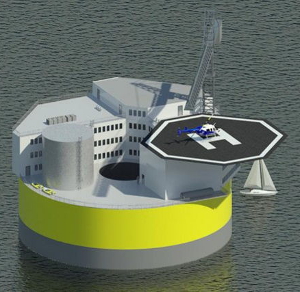Floating nuclear plants given nod for safety
 Energy engineers say floating nuclear power plants could avoid some of the pitfalls of their land-based predecessors.
Energy engineers say floating nuclear power plants could avoid some of the pitfalls of their land-based predecessors.
Designs are in the works which would see nuclear facilities mounted on platforms at sea.
Jacopo Buongiorno, an associate professor of nuclear science and engineering at MIT, says that the floating plants would be able to withstand extreme weather conditions such as the tsunami responsible for the 2011 Fukushima disaster.
He says the nuclear sites could be built in shipyards before being towed to locations kilometres from the shore.
The floating plants would be anchored to the floor of the ocean, conveying power back to land- via an underwater transmission line.
Russia is already in the process of converting several nuclear plants into seaborne power stations, but Buongiorno’s plan is different.
He wants to place the nuclear power station much further from the shore, allowing the plants to endure severe earthquakes and storms without the possibility of meltdown.
“The biggest selling point is the enhanced safety,” said Buongiorno of the design.
“It’s very close to the ocean, which is essentially an infinite heat sink, with so it’s possible to do cooling passively, with no intervention,” he said.
“The reactor containment itself is essentially underwater.”
The offshore plants could end up cheaper than terrestrial ones, which often require the purchase of expensive seafront land for greater access to water supplies.
They would also be easier to decommission, as they could all be towed to a single area to be broken down safely.
More information is available in the following video:








 Print
Print